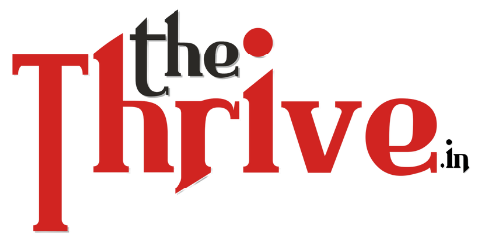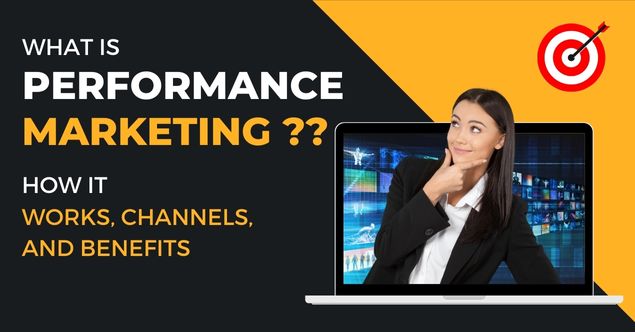The internet is rapidly changing and the way consumers browse and buy products is changing and also completely altered the way companies advertise and sell.
With the explosion of online shopping during the global pandemic (an increase of 46% in 2020!), and the rise of omnichannel marketing, the potential to reach and engage more customers, more often, has also grown.
Today, businesses have the incredible capability to gather campaign data 24/7 and measure the results as they happen. While in the past, attribution was around impossible, data transparency now enables marketers to optimize their marketing campaigns so they perform better. And that’s why it’s called “performance marketing”.
Performance Marketing what is exactly?
Performance marketing is the term given to online marketing campaigns in which advertisers pay marketing companies or advertising platforms for achieving results, such as clicks or conversions.
Unlike traditional and organic marketing campaigns, performance marketing is specifically used to drive actions, track and measure those actions and all while attributing the ROI of each asset, campaign or activity.
Performance marketing gives power to the hands of the advertiser. You determine the action, then pay when that action has been completed whether it’s a sale, lead, or click.
The significance of performance marketing?
Performance marketing lets advertisers measure results and determine the return on investment, leading to more efficient use of advertising budgets.
Advertisers can target particular audiences and track the success of campaigns, enabling refined targeting and better use of resources.
This results in budget-friendly advertising costs, higher ROI, and improved marketing effectiveness. It also shifts focus from ad impressions to user actions, leading to more meaningful and relevant advertising experiences for consumers.
What are the Benefits of Performance Marketing?
Here are the top reasons why your business should invest in performance marketing:
1) Brand awareness:
Through affiliates and agencies with their own established customers, you can reach new audiences and increase traffic to your website.
2) Trackable performance:
Performance marketing is measurable and transparent to track results. In fact, brands can now see the complete click-to-consume path of each buyer and identify where to invest more and in which partners, channels and to produce better results.
3) Lower risk:
Since affiliates are paid only after a desired action takes place, the CPA (Cost Per Acquisition) is often lower and the ROI higher. This leaves more room in the budget for other performance marketing strategies to boost and be tested in order for you to grow and compete.
How does Performance Marketing work?
1) Pay Per Sale (PPS) or Cost Per Acquisition (CPA)
This is the amount a retailer or merchant pays when consumers complete a desired action, such as a sale, a click or fill out a form.
2) Pay Per Lead (PPL)
A “lead” is typically a completed form of registration or signup involving customer information so that the merchant can follow up with the customer and drive sales growth and revenue.
3) Pay Per Click (PPC)
This is the price a retailer pays an affiliate marketing for any ad clicks they refer to a desired landing page.
4) Pay Per X (PPX)
In this payment model, the “X” can represent whatever the merchant defines as the desired action or result outside of a lead, click or sale.
5) Lifetime Value (LTV)
This metric measures the predicted “lifetime value” of a customer throughout their relationship with the retailer.
Example of Performance Marketing Work
1) Retailers or Merchants
Retailers or merchants are businesses that are looking to market their products and services through affiliate partners or “publishers.” A retailer seeks out an affiliate partner, outlines their marketing campaign aims and pays the affiliate once these goals are achieved.
Often the merchants or retailers that do the best in performance marketing are those who already have an online presence in various performance marketing channels, and their website has a minimum proven conversion rate or results that can help them.
These retailers or merchants have affiliate partners that can produce a positive return on investment (ROI) in exchange for marketing efforts, traffic generation and exposure.
2) Affiliates or Publishers
Affiliates or publishers are the “marketing partners” of performance marketing and can come in many different forms: coupon websites, product review sites, blogs, mobile apps and many more.
Affiliates act as an extension of the brand, using their website, social media channel and influence to enhance the performance of the retailer but in return, retailers should also have a strategy and understanding of what these affiliates need from the merchant to be successful.
3) Affiliate networks and third-party tracking platforms
Affiliate networks or third-party tracking platforms provide a one-stop shop for information and tools such as banners, text links, product feeds, promotions and payouts (similar to a bank).
These networks and platforms are also where merchants and affiliate managers create strategic commission structures, issue bonuses, send out newsletters and handle returns.
For both the merchant and affiliate marketer, this is a way to keep track of leads, user clicks, conversions, result and overall campaign performance.
Performance Marketing: What makes it different from other types of marketing?
In traditional forms of advertising, the advertiser pays a fee upfront for ad space independent of performance. That could mean thousands of dollars spent without ever seeing a conversion or results. With performance marketing, advertisers only pay when the measure for (conversion, action or transaction).
1) Performance marketing vs brand marketing
Standing out in the market is a challenge, and that’s why brand awareness is so important. There are many ways to increase brand awareness, such as social media campaigns, traditional advertising, content marketing and many more.
Some of these may actually fall under the roof of performance marketing because they are measurable and advertisers only pay for specific actions or results.
2) Performance marketing vs affiliate marketing
Performance marketing is a traditional media campaign that uses lead or sales-based & commissioned-based marketing approaches to promote traffic and generate sales for the business.
Affiliate marketing, sponsored content marketing, social media marketing, influential marketing, and other marketing models fall under performance marketing.
Affiliate marketing has become a term in marketing that is interchangeable with Performance Marketing. But the fact is that Affiliate Marketing falls under a larger “Performance marketing” under one roof, which includes Influence Marketing, Email, Search, and other sources of marketing, where the marketing companies exchange sales, installations, and other desired actions for fixed commission payouts.
How to Build a Performance Marketing Strategy
There are many different types of performance marketing channels and campaigns available in the market. However, these are some steps to build a performance marketing strategy.
Step 1: Establish your campaign goal
It’s important to establish your marketing campaign goals for performance marketing. Whether generating brand awareness or selling products, setting goals prior to start is the basis and importance of performance marketing.
Once you have decided on your marketing campaign goals, you can use ad platforms to create campaigns that target those campaign goals.
Step 2: Choose your digital channel
In performance marketing, it is wise to diversify the digital channels you use, rather than focusing exclusively on one channel. This helps spread your marketing campaign exposure and reach, broadening the chances for the success of the marketing campaign.
Step 3: Create and launch the campaign
A lot of the work of performance marketing goes into creating marketing campaigns identifying the target audience, understanding their points and desires, and crafting ads and messaging to address their needs, and goals and grab their attention.
Step 4: Measure and optimize your campaign
Performance campaigns start to generate data the moment it begins. It’s up to you as a marketer to optimize individual market campaigns for performance, across all channels you use.
Keep track of analytics and metrics to determine which sources of traffic are performing best for you, then allocate ad funds accordingly to it.
Use performance marketing campaigns not just to grow revenue but also to identify your best channels, audiences, and campaign objectives to increase your return on investment.
Step 5: Manage potential challenges
Like with any marketing campaign, there are some potential challenges that can come with performance marketing. These may include:
Brand safety
Compliance-related issues
Privacy regulations
Click frauds & bot traffic
Publisher fraud and placement transparency.
One way to reduce potential problems at the outset is to focus your resources on high-quality advertising networks and platforms, where issues like brand safety and data privacy are managed responsibly and reliably.
Some of the common channels of Performance Marketing
1) Affiliate marketing
Affiliate marketing is any kind of digital marketing that is affiliated with the advertiser and paid out after the advertiser gets the result action takes place.
2) Native advertising
This is a form of paid media that, unlike display ads or banner ads, but not exactly like ads. It is a kind of payment method for native advertising CPM (pay per impression) and CPC (cost per click).
3) Sponsored content
A form of native advertising and content marketing, sponsored content involves a dedicated post or video on a website or on a social media channel that publishes similar content.
4) Social media marketing
This form of performance marketing uses social media networks to gain traffic and brand awareness, such as through digital content showcased on social media channels.
5) Paid search marketing
Paid search marketing occurs when an advertiser pays per click to sponsored ads on search engines on Google Ads, Bing and Yahoo.
6) Search Engine Optimization (SEO)
The opposite of paid search marketing, organic search uses unpaid ways such as search engine optimization (SEO) and relies on the search engine’s algorithm to rank at the top.
Summary
As marketing trends show continued investment into all things digital marketing, performance marketing shows huge promise for business owners looking to engage and convert new customers at scale and at a lower cost.
Working with publishers and affiliate networks let you an added reach that you might never have to work within more traditional marketing approaches. No matter where you and your business stand in the performance marketing space, there’s always room to grow.
FAQ's on Performance Marketing:
Performance marketing channels refer to all the digital marketing or display advertising channels available online that allow you to run marketing campaigns to meet business objectives such as clicks, ad views, downloads, and app installs.
Performance marketing allows your brand to promote products and services effectively, leveraging the benefits of digital – high-speed distribution, and maximum reach in the market.
Performance marketing is a strategy or subfield of online marketing and is used especially in the area of customer acquisition and customer retention. Its goal is to trigger measurable user reactions and/or transactions.





